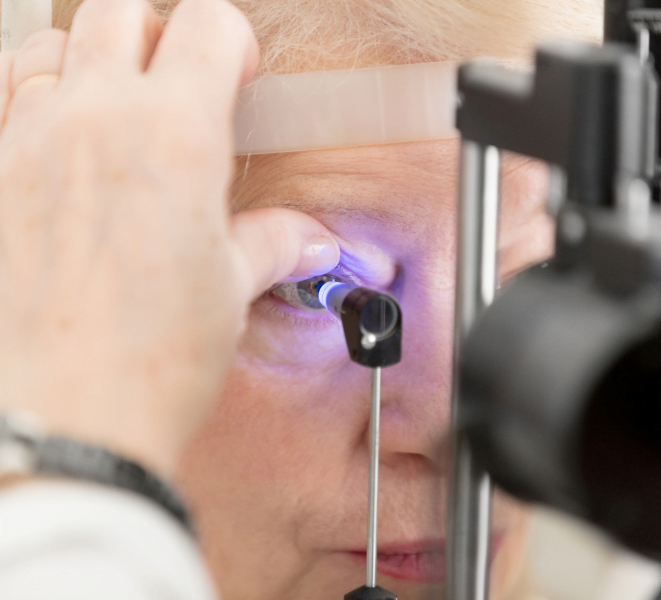
PCCIT-11
for Open Angle Glaucoma
Target population:
Patients threatened with or suffering from Open Angle Glaucoma (OAG)
Open angle glaucoma called ”silent thief of vision” is chronic eye disease leading to irreversible blindness
OAG develops over decades and usually is not detected until a significant fraction of retinal ganglion cells is lost and a patient notices visible visual field narrowing

PCCIT-11 for Open Angle Glaucoma
OAG is frequent: in Europe the population of OAG patients is estimated as more than 12 milion, and at least 160 thousand people become totally blinded by this disease
The only treatment proven to slow down OAG progression toward blindness is eye drops that decrease intraocular pressure, applied daily for life; unfortunately, long-term compliance of patients to such treatment is extremely low, it dropps below 50% after one year
Considering large number of patients even modest improvements in OAG prevention and/or treatment would prevent blindness in thousands of patients
Two major risk factors of OAG are advanced age (irreversible) and increased intraocular pressure (reversible)
Moreover, many OAG patients (in Europe and USA from 10% to 48% of them) do not exhibit increased intraocular pressure – this is so called Normal Tension Glaucoma
But any new treatment needs to be scrutinized by a clinical trial before it can become widely adopted
PCCIT-11: Our new and smart approach for prevention and treatment of glaucoma
The concept stems from observations that a characteristic sign of incipient glaucoma is slowing of electrical implulses conducted from retina along optic nerve and visual pathway to brain cortex; although not detectable by patients, it can be measured by electrophysiological techniques
(e.g. Visual Evoked Potentials)
In early and potentially reversible stage of OAG damage of myelin in the intracranial part of the optic nerve takes place; in more advanced stage of the disease myelin damage spreads upwards along the visual pathway
Combination of two food ingredients, citicoline and squalene, is expected to effectively stop myelin damage and facilitate its regeneration
PCCAR-11: Current stage of development and the next steps
Citicoline is a choline donor that used to be a drug and only recently was reclassified and become a food ingredient; it is scientifically recommended as a FSMP for glaucoma patients, but did not gain popularity in this indication
Squalene is a cholesterol precursor sourced from shark oil or olives; a recent German patent application disclosed its use for treatment of so called demyelinization diseases, but it did not cover glaucoma
In the Early Clinical phase to prove reversibility of optical tract in early glaucoma we will employ two advanced medical techniques to validate the effects of citicoline, squalene and their combination on:
a) Visual Evoked Potentials (VEP) to measure the rate of electrical impulse conduction along the optic nerve and optic tract,
and
b) Diffusion Tensor Imaging (DTI), a magnetic resonance technique that makes it possible to quantitatively evaluate myelin of the intracranial part of optic nerve and in the optic tract (appendix)


